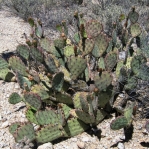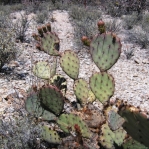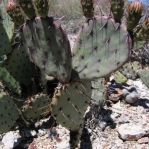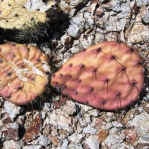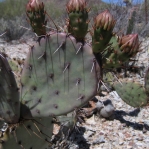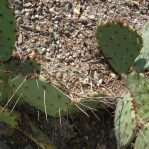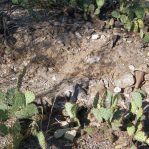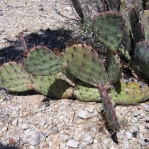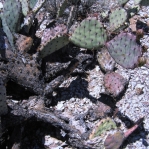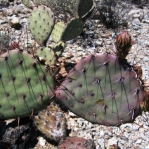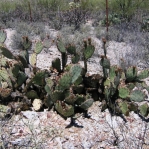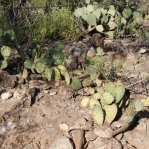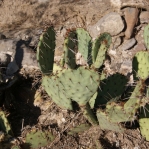
Rose, Contributions from the U.S. National Herbarium 12: 402, 1909
Holotype; Isotype; Isotype; Herbarium; Herbarium; Herbarium
Original Description
What is Opuntia blakeana?
Opuntia blakeana is a small, low, spreading, Sonoran Desert, prickly pear cactus. The cladodes of O. blakeana are typically dark green but may have brown or purple coloration around the areoles. Plants are low and spreading, sometimes widely. They rarely reach 60 cm and are often shorter from prostrate-ascending branches. Old branches may trail on the ground or plants may be more compact. Cladodes are 1-1.5 dm and subcircular or obovate. The spines are short, and light- or dark brown, or tan, often turning pale. Often there are 2-3 spines per areole. When present, the dark-brown spines create a handsome Opuntia.
The flowers are yellow and often reddish in the center. The plants have limited similarity with O. camanchica, but this species is taller and woodier than O phaecantha. The flowers and fruits are similar to those of O. phaeacantha. This prickly pear occurs sporadically in the greater Tucson, Arizona area and probably throughout southern Arizona and adjacent northern Mexico. Because of its smaller size, it is often assumed to be O. phaecantha, but it is much woodier than that species.
This taxon has been essentially unstudied for 100 years. (E.g., JG Brown Botanical Gazette 70 (4), 295-307, 1920; Subcortical formation and abnormal development of stomata in etiolated shoots of Opuntia blakeana). Anderson (2001) does not mention O. blakeana.

